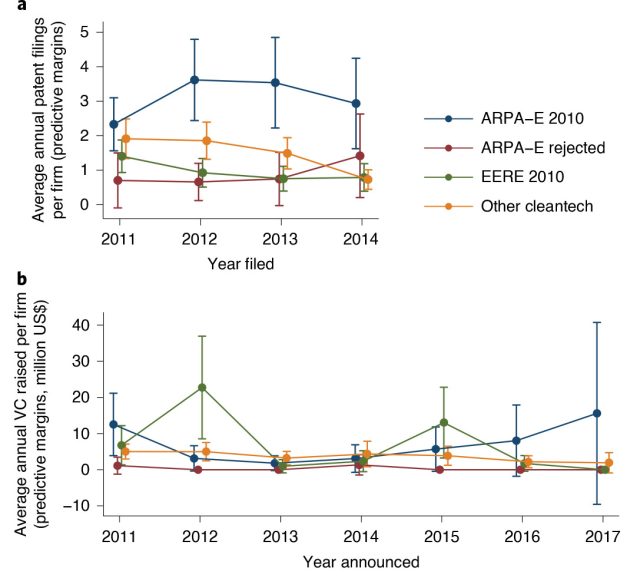In 2009, the US Department of Energy started funding energy research through the Advanced Research Projects Agency–Energy (or ARPA-E) program. The goal was to take more risks than traditional federal efforts and help new renewable energy technologies get off the ground. Private investment had been flagging due to slow returns, but the huge societal benefit of clean energy was deemed to justify government support. The hope was that the funding could accelerate the timeline for new technology to mature to the point that private investors would find the technology more attractive.
At least, that was the idea. A team led by University of Massachusetts Amhersts Anna Goldstein figured that ARPA-Es first class is now old enough to check in on. She and her colleagues looked at a limited sample of 25 startups and found some interesting ways in which these companies seem to have beaten out the competition—and some in which they havent.
Best in class
The 25 startups selected in ARPA-Es first round were compared to several other groups of companies that were born around the same time. The first group consists of the 39 companies that applied for ARPA-E funding and didnt get it but still received an “encouraged” runner-up rating. In the next group are the 70 companies that received funding from the Office of Energy Efficiency and Renewable Energy (EERE) with related government stimulus spending. And finally, there are almost 1,200 other clean energy startups that found their funding elsewhere.
Each group was compared by the number of patents it has filed and by the amount of funding it has found since—either from venture-capital investors, acquisitions by other companies, or going public for stock investment.
Looking at patents, the ARPA-E winners enjoy a significant advantage over the other groups. About 80 percent of them have successfully filed at least one patent. Attempting to account for startup characteristics like pre-ARPA patent activity still shows that the winners filed patents at about double the average rate. This could be due to more than just the cash infusion. DOE project managers both work with and monitor the winners over time and may be helping to guide companies through the patenting process. Companies also have an incentive to show progress to stay in the program, and patents are a good way to do that.
Things get murkier when the researchers look for proof that this led to success in securing additional funding. The ARPA-E winners were more likely to find funding than the ARPA-E near-misses, but differences with the other two groups of startups are small. When analyzing by each specific type of funding, the researchers see some potentially interesting numbers. The ARPA-E winners were slightly more successful at getting venture-capital funding, for example, but the difference is within the error bars due to the small sample size.

There are some obvious caveats here. Its possible that some of the differences can be explained by ARPA-E selecting companies that were more likely to be successful, rather than the ARPA-E funding causing all the success. As the researchers point out, however, that wouldnt necessarily detract from the program, as it would implRead More – Source
[contf] [contfnew] 
arstechnica
[contfnewc] [contfnewc]







